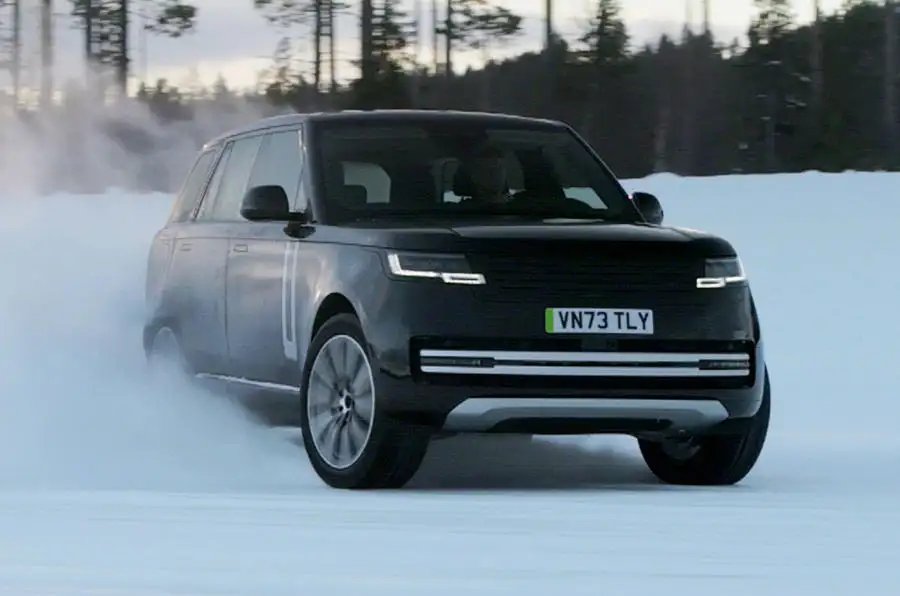Land Rover Range Rover Electric prototypes endure winter testing

Land Rover has put it (almost) all out there with the new Range Rover Electric prototype, camouflaging the vehicle in nothing more than a flat black paint job. The testers have begun their global torture testing, drifting the coming Range across Sweden's frozen lakes in what we'll guess is Arjeplog, one of the favored spots for testing vehicle drifts and snow drifts at -40 degrees Fahrenheit.
Our suspicions from the first teasers appear confirmed, that the full-size flagship won't veer much from the ICE-powered versions with respect to looks. The minimalist design is all there, down to the grille and lower intake. The upper portion isn't a flat panel on the prototype, it's shaped to look like the standard car's. Below, the highlighted twin bars could be the EV's primary signature, how it's told from its conventional counterparts from a distance. The previous teaser also revealed wheel center caps inscribed with "EV." Any of this could be tweaked for production, of course.
The Automotive News future product pipeline says to expect a dual-motor powertrain. All we know about output is the promise of "V8 levels of performance." Since the battery-electric model can be expected to weigh more than the 5,985-pound, ICE-powered, SV trim, we're looking for the electric version's output to match the feeling of the 523 horsepower and 553 pound-feet of torque the SV gets from its BMW-sourced, twin-turbo 4.0-liter V8. An 800-volt architecture will ensure quick refill times for what's certain to be a stout battery.
Whatever that powertrain is, the automaker's building it in-house — battery, electric drive units, and software — and assembling it in the plant that builds ICE-powered Ranges. This marks a change from the JLR Group's only other EV to date, the Jaguar I-Pace.
Land Rover says its designed software to make traction control the responsibility of each drive unit instead of having to communicate with a central processor that employs ABS to regain traction. This would be the goal in every EV — most notably talked up by BMW for its coming electric performance cars — because of the vastly quicker response times. Land Rover says torque reaction time drops from around 100 milliseconds with a processor and ABS to as little as one millisecond.
The debut is likely penciled in for late this year. After it launches, battery-powered versions of the Defender and Velar will follow, probably as part of planned refreshes of Land Rover's entire lineup.
Verwandte Nachrichten
